Chan Chan › Maya Government » Ancient origins
Articles and Definitions › Contents
- Chan Chan › Ancient History
- Maya Government › Antique Origins
Ancient civilizations › Historical and archaeological sites
Chan Chan › Ancient History
Definition and Origins

Chan Chan ( Chimor ) was the capital city of the Chimu civilization which flourished on the northern coast of Peru between the 12th and 15th centuries CE. The city was a giant metropolis populated by peoples from across the Chimu Empire, the largest the Americas had ever seen up to that time. Today, many of Chan Chan's huge palace complexes with their high relief-decorated adobe walls still survive as testimony to the city's lost grandeur.
HISTORICAL OVERVIEW
Chan Chan, also known as Chimor, the name of its original inhabitants, was built at the mouth of the Rio Moche from c. 1000 CE. The initial prosperity of the Chimu was largely due to their agricultural skills as they built an extensive irrigation system using canals. Later, their successful military campaigns and policy of extracting tribute ensured that they became the dominant regional power. At its height, Chan Chan covered some 20 square kilometres and had a population of up to 40,000 making it the largest city yet seen in the Andes. The city became the hub of a vast trade and tribute network, and no fewer than 26,000 craftsmen and women resided there, often forcibly removed from conquered territories, especially the Lambayeque, to mass produce high-quality goods for domestic consumption and export. Raw materials traded and controlled by Chan Chan included gold, spondylus shell, tropical feathers, and foodstuffs.
The traditional founding ruler of the Chimu was Taycanamo, who was considered to have been born from a golden egg and then arrived from the sea. Other notable rulers include Guacricaur, who expanded into the Moche, Santa, and Zaña valleys.Eventually, the Chimu extended their territory even further south and in 1375 CE, under the rule of Nancinpinco, conquered the Lambayeque ( Sican ) culture absorbing some of their cultural practices and artistic ideas. The La Leche Valley was also brought under Chimu control so that, at its height, the Chimu Empire was the largest and most prosperous in South America during the Late Intermediate Period. At its greatest extent during the reign of Minchançaman c. 1400 CE, the area of Chimu influence stretched 1300 kilometres along the coast of northern Peru. As the empire grew so other administrative centres sprang up, such as at Farfan, Manchan, El Milagro, Quebrado Katuay, and the fortress site of Paramonga, but Chan Chan was supreme as the centre of the Chimu world.
CHAN CHAN COVERED SOME 20 KM² & HAD A POPULATION OF UP TO 40,000 MAKING IT THE LARGEST CITY YET SEEN IN THE ANDES.
ARCHITECTURE
The city is without a recognisable centre and spreads out in a series of blocks interspersed with stone-lined canals and punctuated with small artificial lakes and wells. The architecture at Chan Chan is characterised by buildings constructed using pre-prepared sections of poured mud or adobe. Most impressive are the large rectangular palace compounds ( ciudadelas ) which served multiple functions as royal residence, storage facility, mausoleum, and administrative centre.
Ten royal palaces or compounds were constructed over the centuries at Chan Chan. It is possible that the Chimu system of royal inheritance was for each new king to inherit the title but not the wealth of his predecessor. This would result in a late ruler's family taking over the royal palace while the new king was required to build himself a new one, explaining the high number of such palaces at Chan Chan. The system has the added benefit of ensuring a new ruler actively engages in expanding the empire in order to fund his reign.
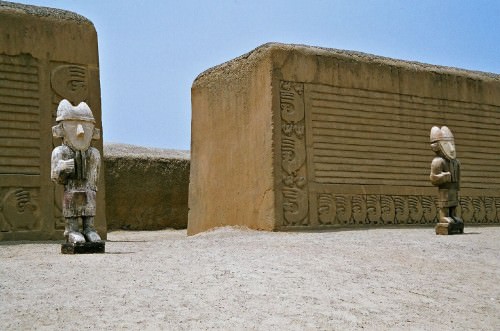
Adobe Walls, Chan Chan
The palaces were built in a rectangular layout, each with 10-metre high double exterior walls, labyrinthine interiors, and with only a single entrance guarded by two standing wooden statues set in niches. Of special note are the U-shaped audience or ritual rooms ( audiencias ) which controlled access to the storerooms. These are around 4 square metres, had elevated floors and, originally, gabled roofs. Functional structures within each compound include administrative and storage buildings and burial platforms accessed by a ramp. The large T-shaped tomb within the latter contained the mummified leaders while smaller tombs their family and entourage. Such tombs would have regularly been re-opened to inter new occupants. Over time the newer palaces became larger - the biggest covers an area of 220,000 square metres - and more space was dedicated to storage, indicative of the Chimu's imperial successes and policy of extracting tribute from conquered territories.
The walls of the compounds, built to restrict access by commoners, were decorated on the outside with bold relief designs, typically repeated geometric shapes, animals, and sea life, especially fish. The interior walls had niches for wooden decorative masks and figurines. Precious art objects would have been displayed here. The distinctive patterns cut into the walls may have been in imitation of those from textile wall hangings or basketwork. Similar adobe compounds were built at other Chimu sites, for example, nine at Manchan and six at Farfan. All of the compounds at Chan Chan are in the centre of the city, while more modest habitation lies on the city's outskirts. Here were the residences for administrators in miniature versions of the larger compounds, and artisans (metalworkers, woodworkers, and weavers), who lived in more modest dwellings of wattle-and-daub and cane with steep roofs and a single hearth. Finally, on the outskirts of the city, were two large burial pyramid -mounds known as Huaca el Dragon and Huaca Tacaynamo.
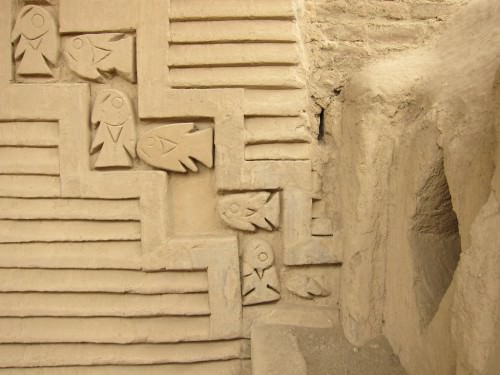
Wall Decoration, Chan Chan
THE FALL OF CHAN CHAN
Chimu architecture, their approach to regional governance, and their art would go on to influence their more famous successors, the Incas, who conquered Chan Chan c. 1470 CE. It was then that Tupac Yupanqui captured the 11th known Chimú ruler Minchançaman, who was kept permanent prisoner at Cuzco to ensure compliance to the new order. In addition, to control precious goods production and so limit the resources to fund rebellion thousands of Chan Chan artists and artisans were forcibly relocated to Cuzco. The Chimu thus became no more than a vassal state in the vast Inca Empire.
ARCHAEOLOGICAL FINDS
Chimu rulers were enthusiastic collectors of art from other cultures and their palaces were like museums full of niches in which objects and statues were placed for display. So too, rulers were buried with precious objects but, unfortunately, the site has suffered extensive looting, starting with the Incas. The Spanish, for example, describe melting down a covered doorway from Chan Chan to produce 500 kilos of gold. Post- conquest, Chan Chan has also suffered from El Nino rains, which have badly eroded the adobe brick buildings and walls over the centuries, some of which are now protected by permanent roofing.Nevertheless, finds include examples of the typical Chimu blackware ceramics, commonly in the form of effigy vessels or bulbous pots with spouted handles and incised decoration of geometric patterns. Surviving metalwork in the form of such items as gold earspools, feathered tunics, pendants of inlaid shells, miniature models of funeral scenes in wood and gold, and fine cotton textiles are all testimony to the skills of Chan Chan artisans.
Maya Government › Antique Origins
Definition and Origins
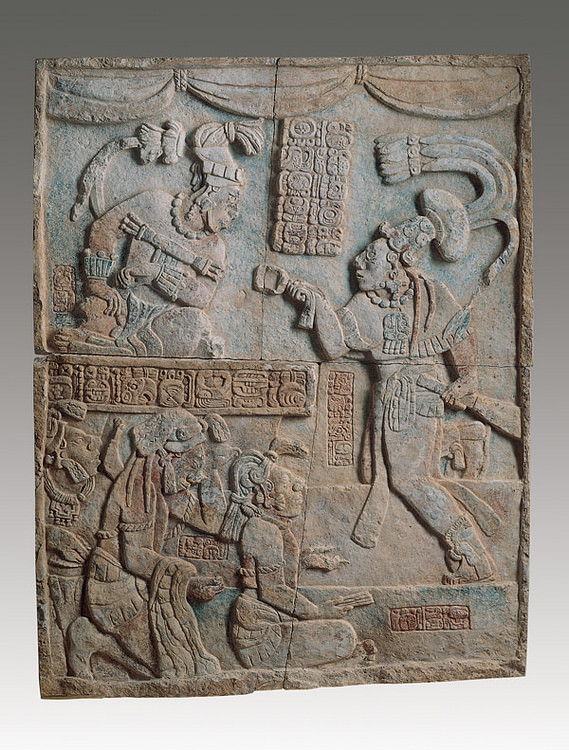
Ancient Maya government was formed on the basis that rulers were thought to have been god-like, which to some might suggest one unified state. However, the consensus amongst anthropologists supports that each major Maya city remained its own independent and sovereign entity with its own unique struggles for political power. The Maya belief in god-like rulers also made it important to keep the line of power in the family, which would occasionally include a woman ruler.
The various Maya city-states are found in what is today Mexico, Guatemala, El Salvador and Honduras. The civilizationextended from circa 1500 BCE to approximately 1500 CE. These years are typically divided into three periods; the Pre-classic, the Classic, and Post-classic. The Pre-classic ranges from approximately 1500 BCE to 250 CE, the Classic from 250 CE to 900 CE, and the Post-classic ranges from 900 CE to 1530 CE.
THE RULERS OF THE VARIOUS MAYA CITY-STATES WERE THOUGHT TO BE A KIND OF HUMAN-GOD HYBRID.
The periods are usually distinguished by a few characteristics. The Classic period can be recognized by the abundance of Maya polities and the thriving trade between the Maya polities and other non-Maya polities. In contrast to the elites from previous periods, elites from the Classic period are believed to have been literate and knowledgeable. The Pre-classic period is notable for fewer large polities. The fundamentals of the later Classic period's trade were also being developed at this time.The Post-classic period is marked by the decline of many of the large and once-powerful city-states. Many of these city-states were abandoned and had a severe drop in their populations.
POLITICS OF THE MAYA
Maya politics did not begin with kings in the early Pre-classic period. Much of the political systems in the Maya polities began in the late Pre-classic period around 300 BCE. The rulers of the various Maya city-states were thought to be a kind of human-god hybrid. Men weren't the only people who were allowed to rule. On occasion, women would rule when the king wasn't yet of age, when a king was away at war, or if a king was unavailable for some other reason. According to Martin, rulers could assert their status as king or lord on Ajaw or Ahau (lord) day. Kings would have an effigy of themselves carved on the Sacred Round. The Sacred Round was a 260 day calendar which consisted of 13 20-day months. Each day of the month was represented by a specific god; Ahau day was specifically for kingly rituals. Once a king had achieved the honor of being on the Sacred Round, the depiction became an actual personification of the king and time. Throughout the Maya era, the Maya remained in separate polities and did not unite as one empire. The same can be said for the celebrated Classic Maya period.
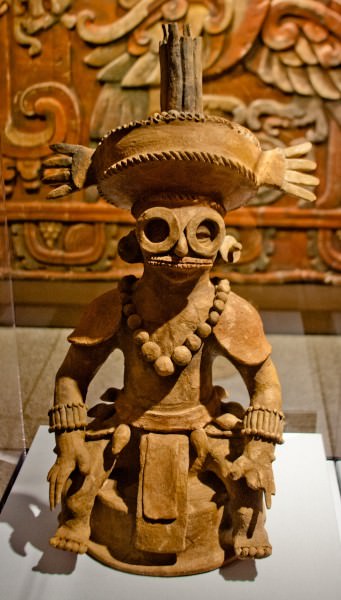
K'inich Yax K'uk Mo
The Classic period is considered by Cioffi-Revilla and Landman to have had about 72 major political units. These polities did not all exist simultaneously. The researchers posit that about 50 polities existed together at one point. The 72-polity figure doesn't include the smaller, less politically stratified units, however. Because these polities would trade with each other as well as non-Maya polities and were independent from each other, the Maya civilization is seen as an internationally trading civilization.
The increased trade of the Classic states contributed to the politics of the Maya. Researchers have understood that the Maya underwent two cycles of politics. The cycles involved an initial period of rise and fall, then a so-called “rebound” time which was shorter than the first period, but still followed the normal patterns of the cycle and went on until the late Post-Classic Maya period. The first cycle involved a longer period of time for economic, political, and population development. Cioffi-Revilla and Landman state that while the number of polities did fall at the end of the first cycle of collapse around 900 CE, the politics did not completely vanish.
MAYA ECONOMY
The economics of most Maya polities are intertwined with the social framework of the Maya. The most widely accepted system of social framework for the Maya is the classic three-tiered system. The system consists of elites, a “middle class,” and a “lower class.” The elites were typically situated near the temples in the city center and their homes were built of stone. The “middle class,” was further from the city centers, with homes made of wattle and daub. Wattle and daub are essentially the new world equivalent of thatch-roofed homes. The “lower class,” were typically even further from the city centers and had wattle and daub homes as well. However, this take on the social structure of the Maya may be shifting.
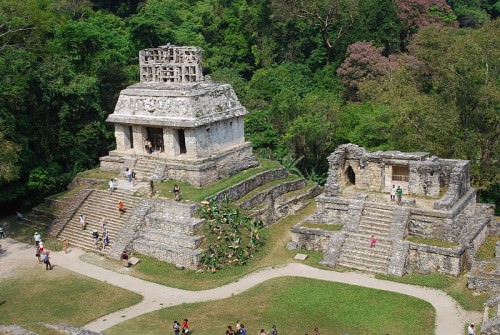
Temple of the Sun, Palenque
Robert Hamblin, a professor at Southeast Missouri University and Brian L. Pitcher, sociologist and chancellor at Washington State University, have found evidence for a wide variety of elite uniforms which suggests that there may have been specialization among the economics of the elite. Because the middle class was the main goods producer, it is implied that the elites and middle class worked closely together in regards to the production of specialized goods. The combination of the different elite uniforms supports the theory that the elites and middle classes worked together. While it may not be the case that elites are actually the producers of goods, they could have been foremen-types for certain industries.
KOSAKOWSKY'S STUDY ON THE CLASSIC MAYA CITY OF MOTUL DE SAN JOSÉ DEMONSTRATES THE SHIFTING TENDENCIES OF REIGN AMONGST THE ELITE.
While there is much study about the larger Maya cities, more recent studies in moderately sized Maya cities is important for establishing what life may have been like throughout the Maya realm. The following cities were the focuses of three different studies which help to illustrate the overarching themes of Maya government.
Kosakowsky's study on the Classic Maya city of Motul de San José demonstrates the shifting tendencies of reign amongst the elite. These changes in the actual geographical boundaries of reign for the elites could also indicate that at some point, there could have been independent cities. In other words, there was no ruling system in some of the ancient Maya cities. The theory is supported by the varying Ik-style pottery. Ik-style poverty is mainly a Motul product that shows designs pertaining to gods, current rulers, feasts, scenes of warriors, and bloodletting scenes. Research also unveils another take on Maya social and economic structure. Instead of the traditional three-tiered system, Kosakowsky argues for a more complex stratification of the Maya economy. The elites of Motul de San José had access to a variety of valuable horticultural items. Elites were not the only segment of the population that had access to high-value materials. Kosakowsky's studies have found that lower classes had access to goods such as white-tailed deer.
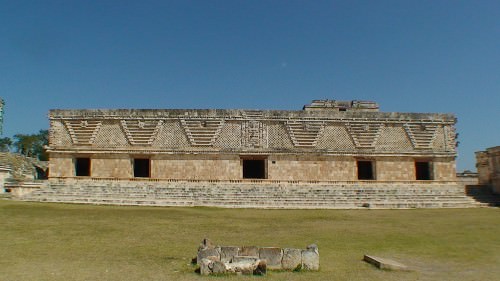
Nunnery Quadrangle, Uxmal
In a study at Copán, there was more evidence to support the diversity between the social classes. Many of the skeletal remains of children across the classes exhibited similar nutritionary and disease stresses. In contrast, the adult elites were more full-bodied, had less signs of arthritis, and were taller than adults from different classes.
In the third case, Cobos examines life in Xunantunich and its surrounding lands. This late Pre-classic/Early-Classic city shows evidence of political experimentation. He argues that this experimentation occurred over a short period of time, but with drastic shifts in policies. Xunantunich showed evidence of “lower class,” people living in the outskirts of the city. However, in contrast to the original notions of class separation, there was also evidence of elites living in the hinterlands of Xunantunich. It is believed that the elites living in the hinterlands were also in charge of the production of goods. The trade of the hinterlands was mainly that of stone tools, and silex, a type of whimsically crafted flint. As for the reigning or royal families, Xunantunich shows that they kept palaces and other large living areas away from the hinterlands and Xunantunich.
CLASSIC MAYA RULERS
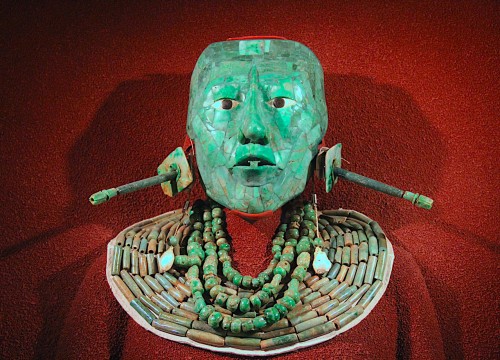
Jade Death Mask of Kinich Janaab Pacal
As mentioned above, women were occasionally rulers of Classic Maya cities. Women rulers were a more prominent phenomena in Palenque. There are at least two notable female rulers of Palenque which include Lady Yohl Ik'nal and Lady Sak K'uk. One recent discovery of an acclaimed “warrior queen" in Waká has brought about a question about female Maya rulers: did Maya queens participate in battles?
Lady K'abal of Waká was given the moniker of kaloomte, or “supreme warlord,” by her city. This suggests that she may have taken part in battles. However, some experts believe that she did not participate as a warrior. This is due to the fact that there is no glyph or artistic depiction to support Lady K'abal's or any other queen's participation in battle, yet. Of course, kings were often required to participate in battles.
K'uk' Bahlam I, the founder of the city of Palenque, was born in 397 CE. Bahlam I acceded the throne in 431 CE and only ruled for four years after that. Palenque's rulers may have been established by the early influence of Teotihucán. However, the scant evidence of early Classic rulers may explain the gap of information between the early Classic and late Classic rulers.
In Copán, K'inich Yax K'uk Mo was ruler and founder in 426 CE. The founder of Classic Tikal was Yax Ehb Xook. While it has been suggested that Maya rulers were legitimized based on family ties, there are several deviations from this in Tikal. One such deviation is that of the dynasty of Jaguar Claw. The shared culture of the Maya can be puzzling when the Maya were never politically unified. However, the Maya are considered one culture primarily because of the shared beliefs, practices of advanced astronomy, and architectural and art styles. Ultimately, it seems that the lack of political unification is what led to their ultimate demise, among many factors.
DISINTEGRATION DURING THE CLASSIC PERIOD
The Classic period is characterized by its seemingly exponential growth whose cause is attributed to a rise in trade and communication. What is clear is the rise in warfare amongst the different Maya polities. There is not much consensus about the cause of the Maya collapse, but there are several theories. Some argue that the collapse was due to a natural disaster of catastrophic proportions, extensive warfare between the polities, famine, civil unrest, and even environmental change.

Maya Warrior
The most popular belief pertaining to the fall of the Maya civilization is that it was the increase in inter-polity warfare that caused the disintegration. The rise in warfare is attributed to the increased trade of the Classic period. With the higher rates of interaction between the polities, scholars believe that tensions between polities because of their political differences caused episodes of inter-polity warfare.
ANTHROPOLOGISTS SUGGEST THAT THE FALLS OF THE VARYING POLITIES HAPPENED SLOWLY OVER THE COURSE OF ABOUT SIX CENTURIES.
Anthropologists suggest that the falls of the varying polities happened slowly over the course of about six centuries. Cioffi-Revilla and Landman also hint that “most of the polities that survived the preclassic,” began early during the pre-classic period and survived into the post-classic period. These longer lasting polities would last about 2,000 years and ultimately collapse during the Post-classic period. Neither author argues that warfare was the sole cause of the Maya collapse. It is possible that there could have been several factors that simultaneously affected the dissolution of the Maya.
One theory gaining popularity is that the Maya fell because of a lack of political unity. One study noticed that Maya states toppled much more quickly than they took to form. Throughout the entire Maya era the states lasted an average of 675 years, with a standard deviation of 65 years. However, Pre-classic states lasted an average of 1154 years, with a standard deviation of 96 years. Classic states averaged 348 years, with a standard deviation of only 24 years.
Pre-Classic states were fewer in number compared to those of the Classic period. As mentioned before, there were at least 50 Maya states in existence at one point during the Classic period. This is almost contradictory for Pre-Classic states. Similarly, the size of Pre-Classic polities is a stark contrast to that of Classic polities. Classic polities had populations of up to or more than 50,000 people while Pre-Classic polities had anywhere from 5,000 to 10,000 people.
Some argue that the lack of political unity amongst Classic states was the likely cause for the disintegration of the Maya. While there was a lack of political unity during the Pre-Classic period, there was not the same amount of competition as in the Classic period. Pre-Classic states did not need political integration to survive. Classic states needed a political harmony in order to combat the growing competition and populations of the many powerful states. Pre-Classic states were all more or less equal, while there were frequent power struggles amongst the Classic states. There is a growing consensus, however, that the collapse of the Maya was due to various agricultural, political and ecological factors acting together.
LICENSE:
Article based on information obtained from these sources:with permission from the Website Ancient History Encyclopedia
Content is available under License Creative Commons: Attribution-NonCommercial-ShareAlike 3.0 Unported. CC-BY-NC-SA License